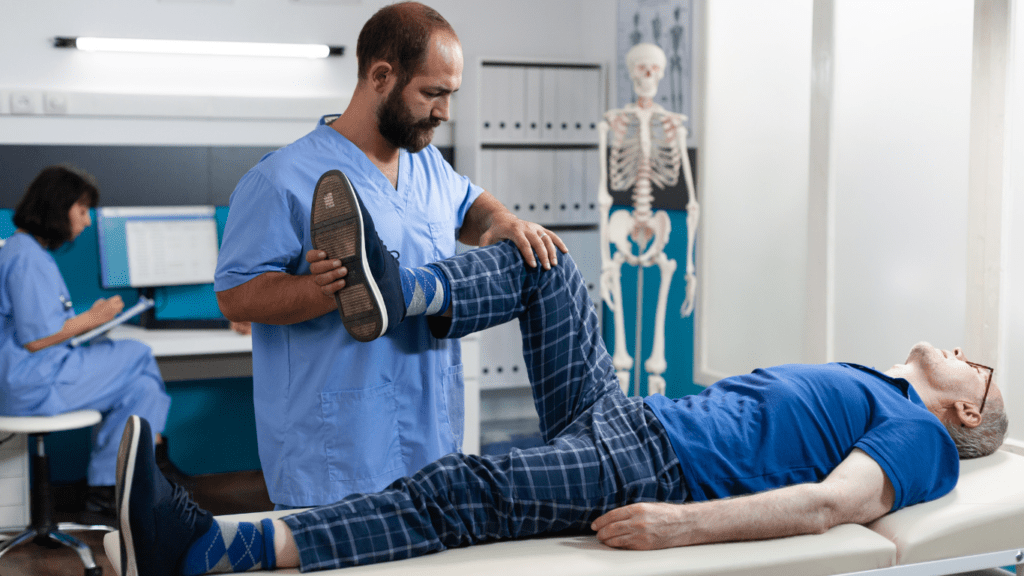As someone who’s passionate about sports and fitness, I understand the importance of protecting our knees from injuries like ACL and MCL tears. These injuries can be debilitating, often requiring extensive recovery periods and affecting our overall quality of life. In this article, I’ll share valuable insights on how to prevent ACL and MCL injuries through simple yet effective measures.
From proper warm-up routines to incorporating strength training exercises, there are various strategies that can help safeguard your knees during physical activities. By being proactive and mindful of your body’s limits, you can reduce the risk of these common knee injuries. Join me as I delve into practical tips and techniques to keep your knees strong and injury-free for a more active and fulfilling lifestyle.
Understanding ACL and MCL Injuries
In this section, I’ll delve into the specifics of ACL (anterior cruciate ligament) and MCL (medial collateral ligament) injuries to help you better understand these common knee issues.
What Are ACL and MCL Injuries?
ACL and MCL injuries are ligament sprains or tears that affect the knee joint. The ACL is located in the center of the knee and helps stabilize it, especially during twisting and pivoting movements. On the other hand, the MCL is situated on the inner side of the knee and provides stability to the joint by preventing excessive side-to-side movement.
How Do These Injuries Occur?
ACL injuries often happen during sports that involve sudden stops, changes in direction, or direct blows to the knee. Common causes include landing awkwardly from a jump, abruptly changing direction, or experiencing a direct impact to the knee, like in football or basketball.
MCL injuries, on the other hand, usually occur due to a direct impact on the outer part of the knee or a force that pushes the knee inward while the foot is planted. This can happen in sports like football, rugby, or skiing where such lateral forces are common.
Understanding how ACL and MCL injuries occur is crucial in taking proactive steps to prevent them and protect the long-term health of your knees.
Risk Factors for Knee Injuries
When it comes to knee injuries, understanding the risk factors can help in taking proactive steps to prevent potential harm. Here are some key factors that can contribute to the likelihood of ACL and MCL injuries:
Impact of Age and Gender on Knee Injuries
As I delve into the specifics of knee injuries, it’s essential to consider the impact of age and gender. Research indicates that younger individuals, especially those involved in high-impact sports, are more prone to ACL and MCL tears due to their active lifestyles. Additionally, gender plays a significant role, with female athletes having a higher risk of ACL injuries compared to their male counterparts. Understanding these demographics can help tailor injury prevention strategies to specific age groups and genders effectively.
Role of Physical Activity in Knee Injuries
Physical activity levels have a direct correlation with the risk of knee injuries. Engaging in activities that involve sudden stops, pivoting, or jumping increases the strain on the knee ligaments, making them more susceptible to injury. Athletes participating in sports like soccer, basketball, and skiing are at a higher risk of ACL and MCL tears due to the repetitive stress on their knees during gameplay. By being aware of the demands of different physical activities, individuals can adjust their training routines and techniques to minimize the chances of sustaining knee injuries.
Preventative Strategies for Knee Health
When it comes to safeguarding the health of your knees and preventing injuries like ACL and MCL tears, implementing effective preventive strategies is key. Here are essential tips to help maintain the strength and stability of your knees:
Importance of Strengthening Exercises
Engaging in regular strengthening exercises focused on the muscles surrounding the knee joint is crucial for preventing ACL and MCL injuries. By improving muscle strength, especially in the quadriceps, hamstrings, and calves, you can provide better support and protection to the knee ligaments. Incorporating exercises such as squats, lunges, leg presses, and calf raises into your workout routine can help enhance knee stability and reduce the risk of ligament tears during physical activities.
Proper Techniques in Sports and Training
Adopting proper techniques in sports and training is paramount in preventing knee injuries, particularly ACL and MCL tears. Ensuring that you have the correct form and posture while engaging in sports activities or workout routines can significantly decrease the strain on your knee joints and ligaments. Whether you’re running, jumping, or performing strength training exercises, focusing on proper alignment, balance, and movement patterns can help minimize the risk of overloading the knees and lower the chances of injury. It’s essential to pay attention to your body mechanics and seek guidance from a coach or trainer to ensure that you’re using the right techniques tailored to your physical abilities and limitations.
Protective Gear and Its Efficacy
When it comes to safeguarding your knees against injuries like ACL and MCL tears, using the right protective gear is crucial. By employing appropriate equipment, individuals can significantly reduce the risk of these serious injuries. Let’s delve into the effectiveness of specific types of protective gear and the advantages of professional fittings to enhance knee protection further.
Comparing Different Types of Knee Braces

In my experience, knee braces serve as vital tools in preventing ACL and MCL injuries by providing support and stability to the knee joint during physical activities. There are various types of knee braces available, each offering distinct benefits depending on the level of protection required. Some common varieties include:
- Prophylactic Braces: These prevent injuries and are commonly used in sports that involve high-risk movements, such as football or basketball.
- Functional Braces: Designed for individuals who have already experienced knee injuries, they offer support during recovery and help prevent further damage.
- Unloader/Offloader Braces: Ideal for individuals with arthritis, these braces help reduce pressure on specific areas of the knee joint, alleviating pain and discomfort.
By selecting the appropriate type of knee brace based on individual needs and activities, one can effectively enhance knee stability and lower the chances of ACL and MCL injuries.
Benefits of Professional Fitting for Protective Gear
In the realm of protective gear, the significance of professional fitting cannot be overstated. Opting for a professional fitting service ensures that the protective gear, such as knee braces, is tailored to the individual’s unique anatomy and requirements. Here are some key benefits of seeking professional fitting services for protective gear:
- Customized Fit: Professionals can accurately measure and customize the gear to provide optimal support and comfort.
- Enhanced Performance: Well-fitted protective gear allows for unrestricted movement, enhancing performance during physical activities.
- Injury Prevention: Properly fitted gear reduces the risk of injuries by providing adequate support and stability to vulnerable areas.
Investing in a professional fitting for protective gear can make a significant difference in the effectiveness of the equipment and ultimately contribute to better knee protection and injury prevention.
When to Seek Professional Help
When experiencing signs and symptoms of severe knee injuries, such as sudden swelling, intense pain, or difficulty bearing weight on the affected knee, it’s crucial to seek immediate medical attention. Ignoring these indicators can exacerbate the injury and lead to long-term complications, affecting mobility and overall knee function.
Signs and Symptoms of Severe Knee Injuries
If you notice symptoms like a popping sound at the time of injury, severe pain, immediate swelling, inability to fully bend or straighten the knee, or a feeling of instability while walking, it could indicate a significant knee injury. Recognizing these signs early and seeking prompt medical evaluation can help prevent further damage and improve the chances of successful treatment.
Importance of Medical Intervention
Medical intervention plays a pivotal role in diagnosing the extent of the knee injury, determining the appropriate treatment plan, and initiating timely rehabilitation. Consulting a healthcare professional for thorough assessment, imaging tests like X-rays or MRIs, and expert guidance can guide you on the best course of action for optimal recovery and minimize the risk of recurrent injuries. Delaying medical intervention can prolong the recovery process and potentially lead to complications, underscoring the significance of timely and expert care for severe knee injuries.

 Danielo Fleischeronic is the visionary founder of Awesome Football Network, a premier destination for in-depth football coverage and analysis. His commitment to the sport is reflected in the platform's rich content, which includes breaking news, match analyses, and expert commentary. Danielo’s extensive knowledge and passion for football drive the network’s mission to provide fans with the latest insights and updates from around the world.
In addition to his role as founder, Danielo is also an accomplished article writer. His writing covers a broad spectrum of football-related topics, from tactical breakdowns to player profiles, offering readers a comprehensive understanding of the game. Through his work, Danielo aims to enrich the football experience for enthusiasts and professionals, making Awesome Football Network a trusted resource in the football community.
Danielo Fleischeronic is the visionary founder of Awesome Football Network, a premier destination for in-depth football coverage and analysis. His commitment to the sport is reflected in the platform's rich content, which includes breaking news, match analyses, and expert commentary. Danielo’s extensive knowledge and passion for football drive the network’s mission to provide fans with the latest insights and updates from around the world.
In addition to his role as founder, Danielo is also an accomplished article writer. His writing covers a broad spectrum of football-related topics, from tactical breakdowns to player profiles, offering readers a comprehensive understanding of the game. Through his work, Danielo aims to enrich the football experience for enthusiasts and professionals, making Awesome Football Network a trusted resource in the football community.
